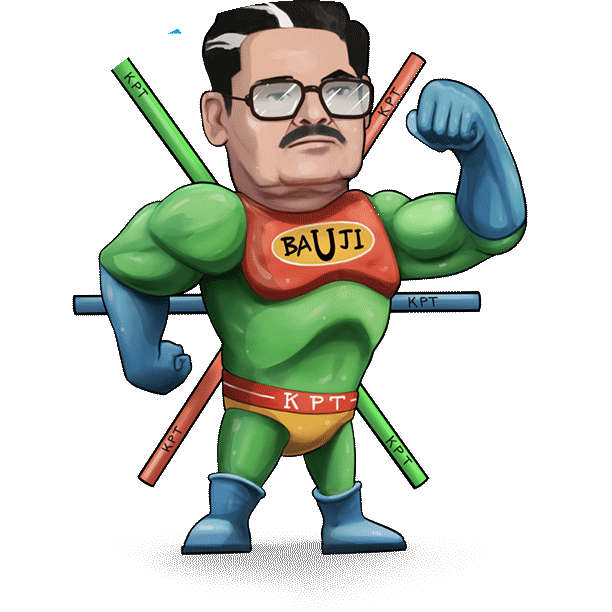Are you curious about how PPR Pipes are made?
Today we will discover the manufacturing process of PPR Pipes with our unique step-by-step guide, unveiling the engineering behind their durability and versatility.
PPR Pipes are becoming increasingly popular in plumbing, construction, and industrial applications. From resin pellets to a finished product, let’s explore the fascinating process of creating PPR Pipes.
Table of Contents
The Materials
KPT-PPR Plumbing Pipe system is made from the finest quality materials sourced from Basel and Hyosung. The primary material used in the production of pipes and fittings is a Random Copolymer Polypropylene (PPR-C), which has received approval according to DIN 8078 & DIN 16962 standards.
PPR-C material is a fantastic choice because of its high-temperature resistance, outstanding mechanical qualities, and durability.
It also protects your plumbing system and prevents leaks, making it a perfect choice for commercial and residential use.
With its resistance to chemical attack, impact resistance, and good thermal properties, PPR-C material has proved to be a reliable choice for plumbing systems in various sectors.
When choosing the right material for your plumbing system, choosing PPR-C material should be your top consideration.
KPT Pipes always uses the best materials in the manufacturing process of their PPR pipes. We ensure that customers can trust our piping systems, as we make them with only the highest quality materials.
The Manufacturing Process
KPT Pipes manufactures PPR pipes using a careful process that incorporates high-quality raw materials and advanced manufacturing techniques. KPT Pipes sources Hyosung material, which is widely recognized for its exceptional quality and reliability.
The production process is in line with the industry standards, specifically DIN 8078 & DIN 16962 standards, ensuring that the end product is durable and robust.
The manufacturing process begins with the transformation of the raw material. The high temperature exposes the Hyosung material to plasticization, facilitating ease of work with the material. This influx of temperature also results in improved flexibility, making the material easier to extrude.
PPR pipes are created through the process of extrusion. The process involves forcing the heated material through a die that shapes and sizes the pipe. It forms the PPR pipe with a consistent internal diameter throughout its length.
The process of creating fittings used in PPR pipes involves moulding. It entails melting the raw material and pouring it into a mould of the desired shape and size. Afterwards, we cool and cut the moulded fitting to the appropriate dimensions.
The final product is a PPR pipe that can endure heat and has physical and chemical properties that make it ideal for carrying potable water. It also finds use in the heating sector, rendering it versatile and extensively employed across various industries.
PPR pipes can withstand a constant temperature of 700°C. This means that they can easily carry hot water without the risk of bursting or degrading over time. Additionally, KPT PPR pipes have a lifespan of 50 years, making them a cost-effective solution for plumbing and heating systems.
The Quality Control Process
Once the PPR pipes have been constructed, it is critical that they fulfil the highest quality requirements. The quality control process initiates immediately after manufacturing the pipes and before releasing them to the market.
The first step in the quality control technique is to conduct visual inspections to ensure that the pipes are free of evident faults or anomalies. This involves inspecting the pipes for any fractures, dents, scratches, or discolourations that might affect their quality.
After that, we subject the pipes to a battery of pressure tests. These tests confirm their ability to resist high pressure without leaking or exploding. During this test, we apply high pressure to PPR pipes for a certain amount of time, and we identify and fix any leaks or ruptures.
The final step in the quality control process is to conduct an overall performance test on the pipes. This involves checking the flow rate, temperature resistance, chemical resistance, and other important properties to ensure that the pipes can withstand different environments and applications.
By following these stringent quality control measures, KPT Pipes ensures that their PPR pipes are of the highest quality and meet industry standards. This guarantees that customers receive durable and reliable pipes that can last for decades without any problems.
The Benefits of PPR Pipes
PPR pipes have grown in popularity in recent years due to their significant advantages over standard pipes composed of PVC, copper, or galvanised steel.
One of the most significant advantages of PPR pipes is their resistance to high temperatures. PPR pipes can resist temperatures of up to 1000°C, making them ideal for hot water systems. These pipes are also chemically resistant, making them a good choice for use in industrial applications that require corrosive-resistant piping solutions.
PPR pipes offer exceptional insulation due to their low thermal conductivity, effectively minimizing heat loss. Furthermore, because these pipes are lightweight, they are simple to carry, handle, and install.
PPR pipes contribute to eco-friendliness as they allow recycling and reusing, offering a sustainable and economical long-term option. They’re also non-toxic and sterile, making them ideal for usage in things like drinking water systems.
Overall, the advantages of KPT PPR pipes make them an ideal choice for a variety of applications ranging from industrial to domestic plumbing. These affordable, durable, safe and environmentally friendly pipes offer an excellent plumbing solution for anyone seeking superior quality.


